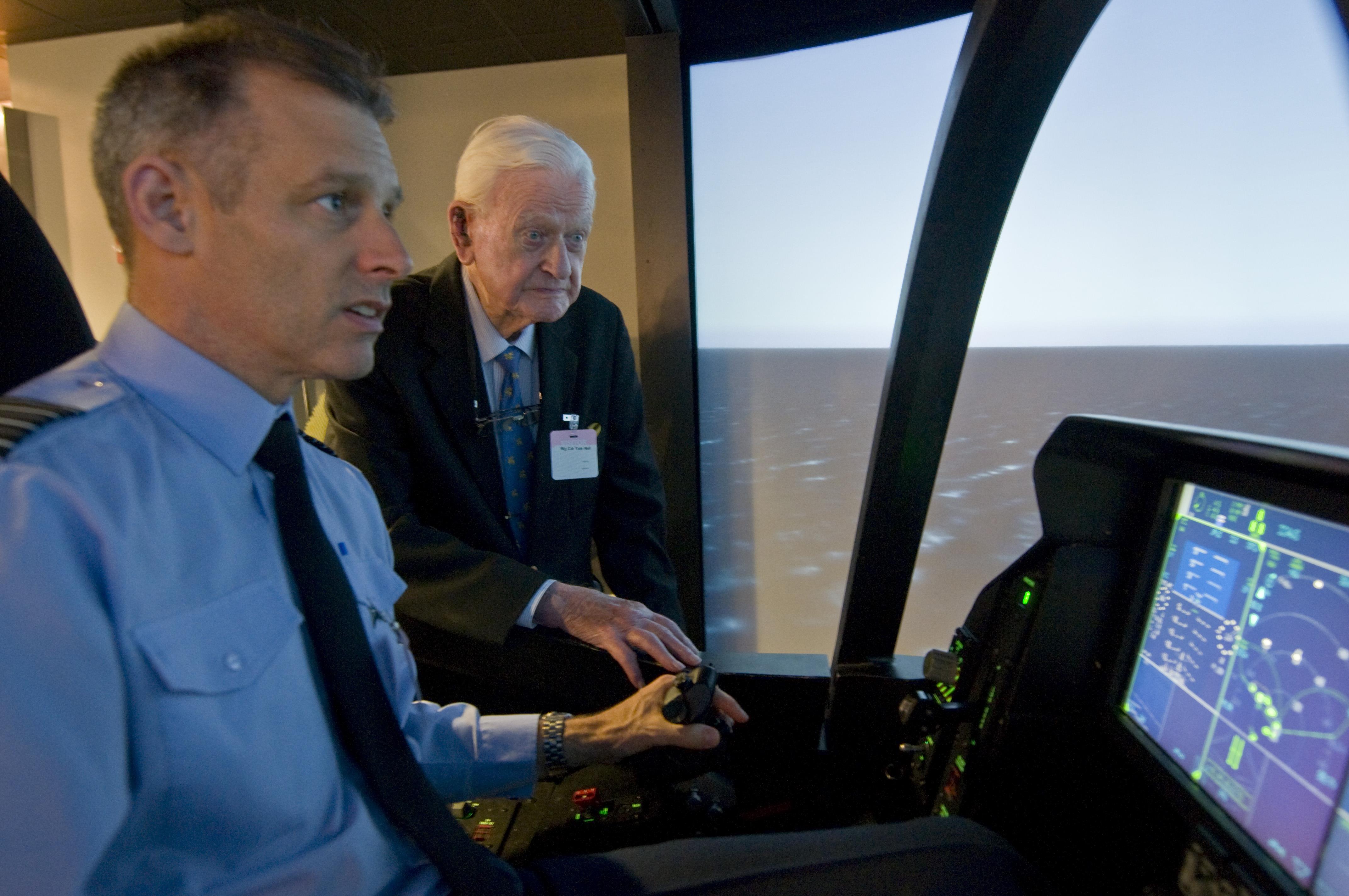By Sean Kimmons, Air Force News Service / Published October
08, 2015
ARLINGTON, Va. (AFNS) -- The World War II flying ace looked
wide-eyed at the instrument panel of an F-35 Lightning II simulator, as a pilot
hovered the virtual fighter jet above a warship and safely landed it.
“It’s so much beyond my comprehension,” Tom
"Ginger" Neil, Britain’s highest-scoring living ace, said of the
aircraft’s fifth generation design, which also has stealth features. “It’s a
new world entirely.”
Seventy five years ago, a 20-year-old Neil flew a Hawker
Hurricane for the Royal Air Force, shielding his homeland against thousands of
German bombers in the Battle of Britain -- the first ever battle decisively
fought in the air.
“We didn’t think strategically or anything like that,” Neil
said of his fellow pilots in the No. 249 RAF Squadron, who were as young as he
was. “We were immersed with day-to-day fighting. All we were able to do is duck
and weave to preserve our lives.”
Neil survived tense dogfights in the four-month battle that
left more than 40,000 people dead. He was later credited with shooting down 14
enemy aircraft in the war -- most of them during the battle that ended Oct. 31,
1940.
Bomber raids
One day that remains vivid in his mind was Sept. 15, 1940,
when Adolf Hitler ordered a fierce bombing campaign ahead of an expected
invasion.
As two major German bombing raids were launched on London,
Neil and others were dispatched up to 20,000 feet in the sky to stop them. In
the enemy formation, Neil said he focused on a Dornier Do 17 bomber and fired
at it, causing the crew to abandon the damaged aircraft.
“I just saw whirling arms and legs coming at my direction
from the back of the aircraft,” Neil said of watching them parachute out. “I
thought they were going to hit me.”
German fighters also attacked him and he returned fire as
best he could as he swooped toward the bombers again.
“Everything happened so quickly. You were being attacked by
enemy fighters at the same time and also shot at by other members of the bomber
formation,” Neil said, adding that his Hurricane only suffered minor damage.
Around 60-80 German aircraft were shot down that day, Neil
said, four of which credited to him.
“You shot at them when and how you could, and hopefully
you’d hit something,” he said.
New generation
Decades after his historic run with propeller-driven
aircraft, the 95-year-old former wing commander toured an F-35 simulator that
trains pilots on the Air Force’s newest fifth-generation fighter jet at the
Lockheed Martin office Oct. 7.
Neil, nicknamed Ginger from his auburn-colored hair as a
young lad, was astute as he probed to know more of the aircraft, even if his
hair has since faded to white.
He recalled that in a Hurricane he could spot an enemy
aircraft within a few miles. But an F-35 pilot could be aware of an enemy
aircraft hundreds of miles away, officials said.
“It’s unbelievable, mind boggling,” Neil later said of the
F-35. “It means a lot to me now that I’m a little more conversed on it.”
Although pilots engaged in dogfights may be absent in
today’s warfare, many believe air superiority of the United States and its
allies is still being threatened as other nations boost defense spending.
“The gap is closing,” said British Capt. Peter “Willy”
Hatchett, assigned to the F-35 Joint Strike Fighter Program, who showed Neil
the simulator. “We can’t rest on our laurels.”
Hatchett, who has flown a Hurricane in airshows, said he was
honored by the presence of a fighter ace of Neil’s caliber.
“For me, being involved in the military and the projection
of power in the modern age, to meet somebody like him, who put his life on the
line and who really came through when the going was tough, is very special,” he
said.
The first batch of F-35 jets is expected to be operational
by summer 2016. At least 12 countries are slated to purchase the aircraft.
The Air Force is set to be the largest F-35 operator, with
more than 1,700 F-35A aircraft that’ll work alongside the F-22 Raptor, the
branch’s other fifth-generation fighter.








No comments:
Post a Comment